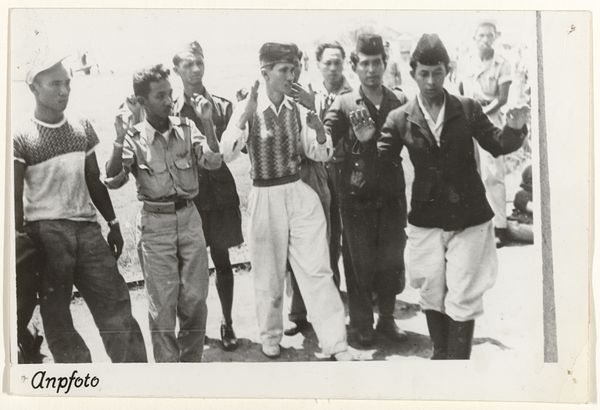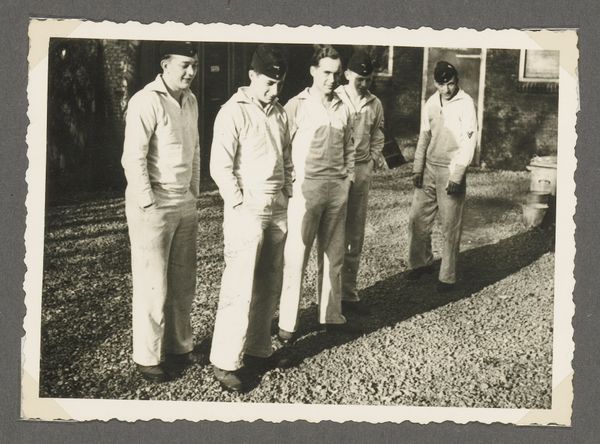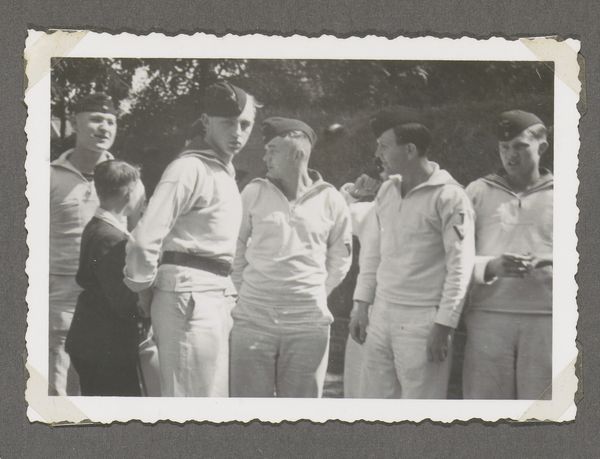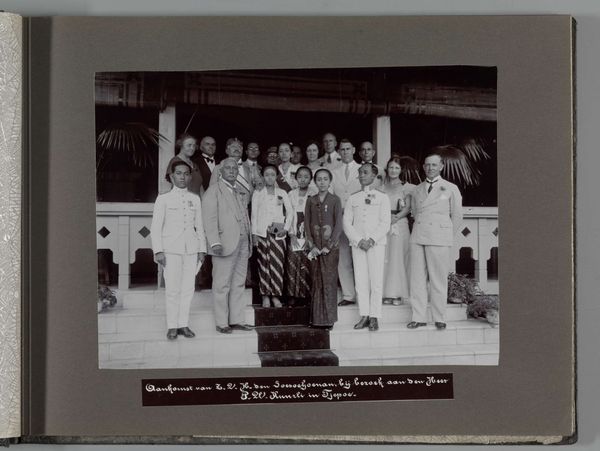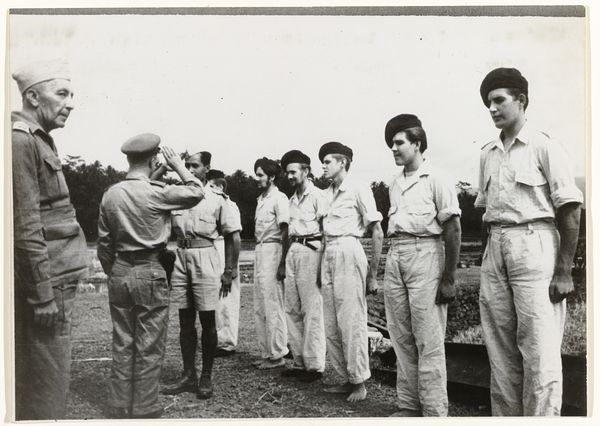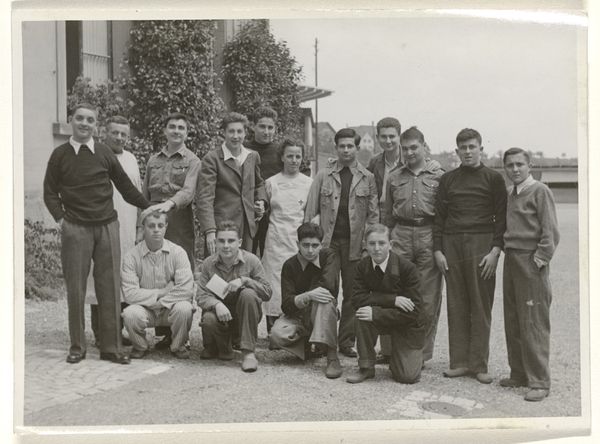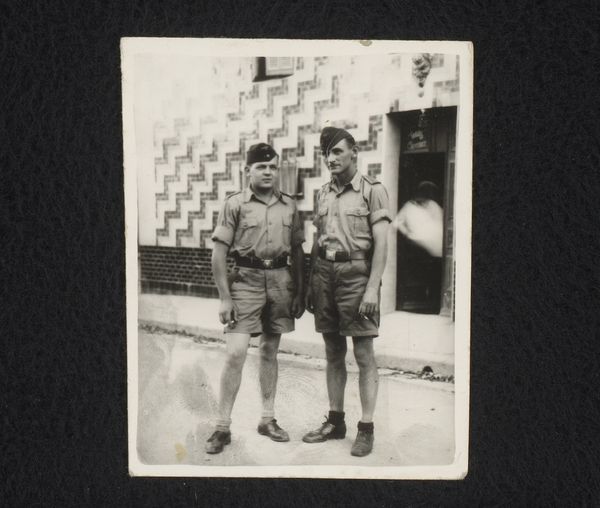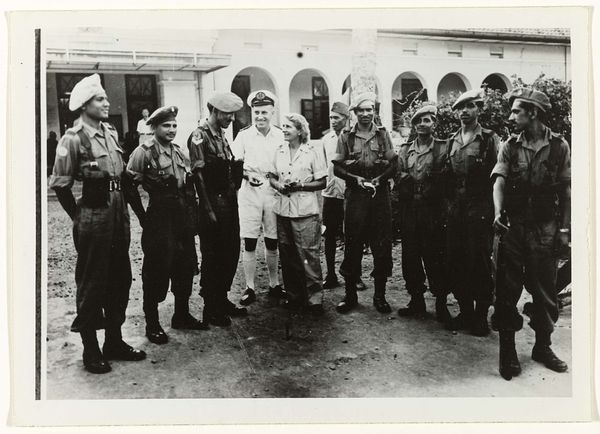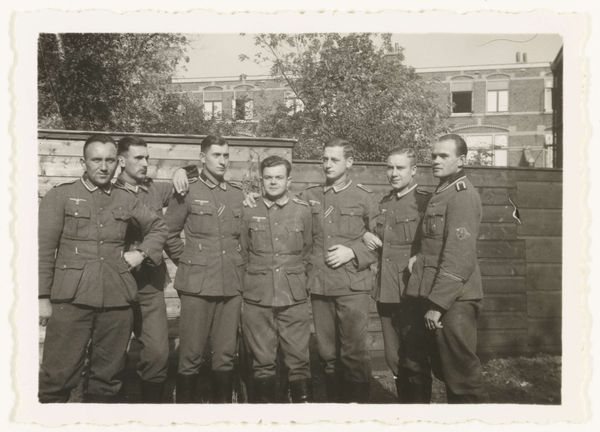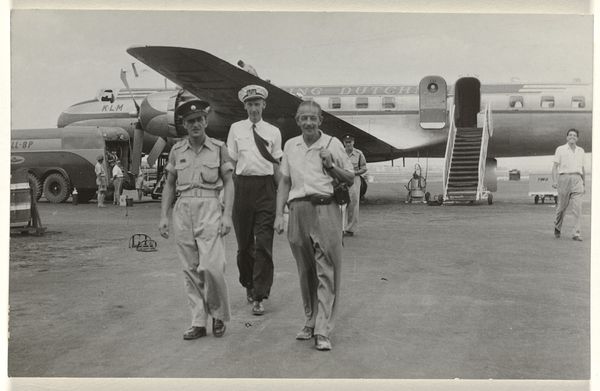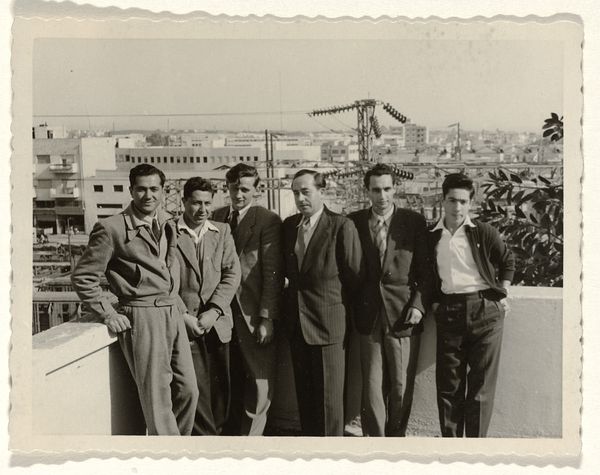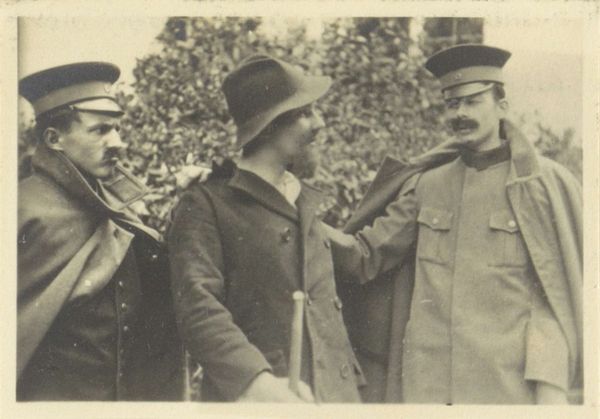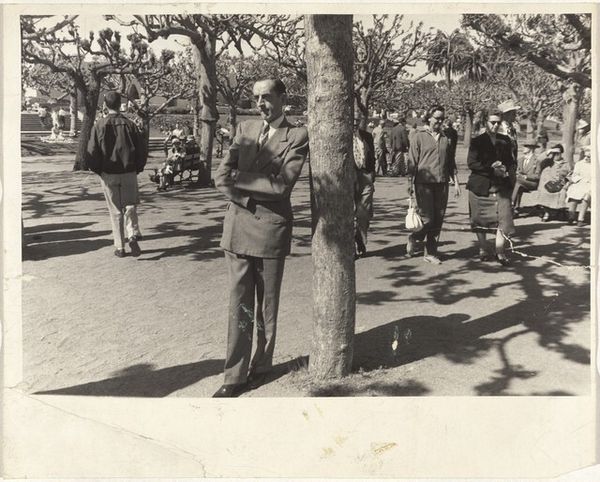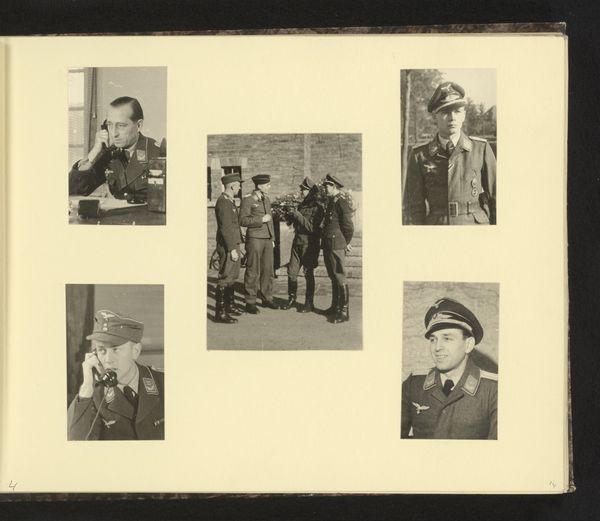
photography, gelatin-silver-print
#
portrait
#
asian-art
#
archive photography
#
photography
#
historical photography
#
postcolonial-art
#
group-portraits
#
gelatin-silver-print
Dimensions: width 20.5 cm, height 15 cm
Copyright: Rijks Museum: Open Domain
Editor: Here we have an Associated Press photograph from 1949 titled "President Soekarno gevangen gehouden in zijn eigen paleis in Jogyakarta," depicting what seems to be Soekarno's confinement. The high contrast of the gelatin-silver print and the stiff posture of the figures evoke a somber, almost resigned mood. What story do you think this image is telling? Curator: This image offers a powerful commentary on the complexities of postcolonial power dynamics. Look at the figures—Soekarno, the leader of the Indonesian National Revolution, positioned, but also seemingly guarded, between different power structures. The starkness highlights the contradictions inherent in "independence" when external forces still exert control. Consider the gaze—does it convey defiance, resignation, or something else entirely? Editor: It's interesting you point out the seeming contradiction of independence. I was reading the body language and I wonder about their inner psychological state during this controversial historic moment. Do you feel it depicts a personal narrative alongside the political one? Curator: Precisely. By framing it as a personal narrative intersecting with the political, the photograph becomes even more resonant. Think about the psychology of occupation, the insidious ways power manifests in everyday life. How does this photograph contribute to larger narratives surrounding identity, nationalism, and resistance in a postcolonial context? And whose story is being prioritized here? Editor: That really reframes the photograph. I hadn't thought about how my own reading could be influenced by Western perspectives. Curator: It’s vital to consider the diverse, often marginalized, voices and experiences that are enmeshed within it, and consider how a seemingly neutral image can perpetuate particular power dynamics. Editor: It certainly challenges us to look deeper into the nuances of historical events. Curator: Exactly. Analyzing the photograph allows us to confront uncomfortable truths and work towards a more equitable understanding of history.
Comments
No comments
Be the first to comment and join the conversation on the ultimate creative platform.
